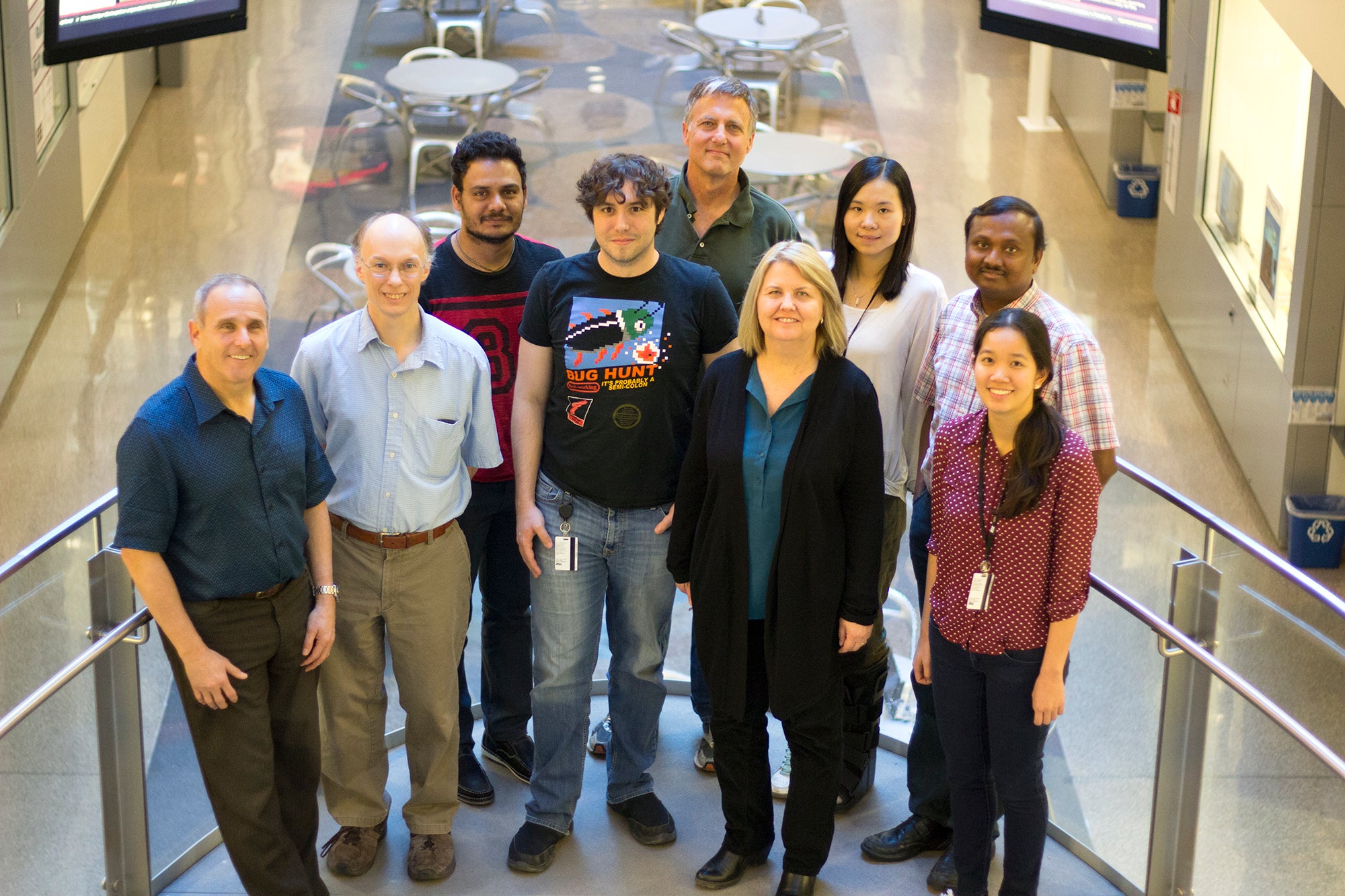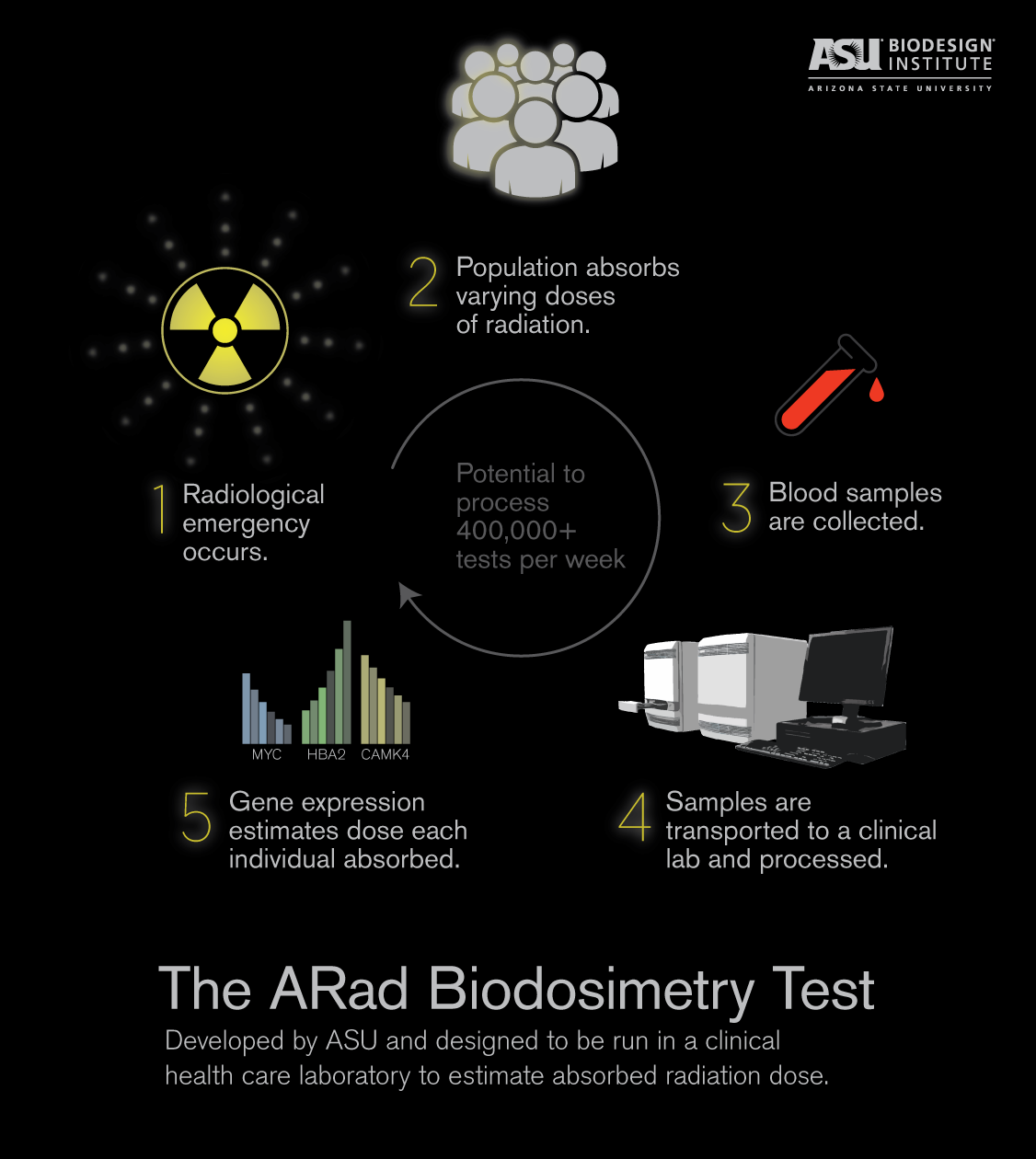Arizona State University has been selected for a team that will complete development of a test that could save thousands of lives in the event of a nuclear explosion.
The test is one of the first to be able to determine how much radiation has been absorbed by a person exposed to a radiological event. It is capable of testing thousands of people quickly.
The U.S. Department of Health and Human Services’ Office of the Assistant Secretary for Preparedness and Response will fund the project.
“It’s a major piece of technology,” said William Pavlicek, chair of the Division of Diagnostic Physics in the Department of Diagnostic Radiology at Mayo Clinic. “This is an extraordinarily important development.”
In a large-scale nuclear emergency, hundreds of thousands of people will need to be assessed for injuries and illness caused by high doses of radiation. Doctors would need to know how much radiation each person has absorbed to determine what type of treatment to provide. People with toxic levels of exposure can go for days without showing symptoms, according to Pavlicek.
“This is specifically about a nuclear event,” principal investigator Josh LaBaer said. “It’s the kind of test you hope will never, ever, be used.”
Existing tests are only skin-deep. They measure only how much radiation is on a person’s skin, not much has been absorbed by their organs.
“There would be no way (with existing methods) to determine who had been exposed to radiation and how much they had (absorbed),” said LaBaer, director of the Biodesign Institute’s Virginia G. Piper Center for Personalized Diagnostics.
“This is specifically about a nuclear event. It’s the kind of test you hope will never, ever, be used.”
— principal investigator Josh LaBaer
The U.S. government is looking for a way to measure absorbed radiation in order to effectively treat acute radiation syndrome, he said. The ASU Radiation (ARad) Biodosimetry Test kits are configured to process 2,000 samples in 24 hours.
The ARad test could help save thousands of lives in the scenario it’s designed for, said Richard Besserman, operations executive for the Center for Emergency Management and Homeland Security (College of Public Service and Community Solutions). Besserman is a medical doctor with training from the United States Army Medical Research Institute for infectious Diseases and the Army Medical Research Institute of Chemical Defense. He worked on 9/11 in New York and was part of a team that deployed to the Gulf Coast after Hurricane Katrina.
Resources are limited in a disaster, Besserman said.
“This has the potential of saving lives by enabling the medical community to advise people who are contaminated or exposed and to (screen) them so that can identify who needs treatment,” he said. “You can have radioactive dust on your body that can be easily washed off so that it doesn’t get into your tissues.”
Exposure and contamination are two different things, Besserman explained. If radiation doesn’t get into the body, chances are nothing will happen.
“A good shower can wash it away,” he said. “Knowing about how much radiation entered the body is important and can guide treatment including when to perform lifesaving surgery. The test will provide more helpful information than our current methods.”
“One of the biggest parts of disaster preparedness is triaging people — putting the right people in the right place,” said April Hill, an emergency room nurse practitioner who also teaches in the College of Nursing. The ARad test would be used after triage to confirm the triage result and provide measurement to support treatment.
The ASU BARDA team (from left): Joshua LaBaer, Garrick Wallstrom, Shodhan Manda, Ian Shoemaker, Mike Fiacco, Kristin Gillis, Xin Guan, Vel Murugan and Merica Vorachitti. Not pictured: Jin Park and Paul Maranian. Photo courtesy of Biodesign Institute
It has been a six-year effort to put LaBaer’s team where they are now. Eleven teams — most of them academic and private companies — competed for the contract. Reviews by experts periodically down-selected teams.
“ASU managed to stay in all the way through,” LaBaer said. “We were kind of the exception there.”
The contract to the prime, MRIGlobal of Kansas City, Missouri, is worth more than $21.3 million over the first four years and three months and could be extended for up to $100 million over 10 years. ASU is a subcontractor to support transfer of the ASU technology and FDA submission.
The latest round of funding is for product development. Questions in the next round will revolve around product validation, FDA submission and assay production.
“The agency feels that the technology we developed under ASU’s guidance works and thus has a superior chance of reaching the final product stage that will be useful to the country,” LaBaer described final approval.
The parameter requirements were stiff, involving estimating dose per person with high resolution, the need to take blood samples for anywhere from one to seven days after the event, and the ability to process several hundred thousand samples and return reports in a very short time.
“When we began, I wasn’t sure this was doable,” LaBaer said. “Biological systems do not act in linear ways. ... It epitomizes ASU’s direction towards transdisciplinary science, because it required several disciplines (radiation biology, statistics and software engineering, among others) to come together. The fact we were able to pull this off is quite exciting.”
The test comes from a call from the Biomedical Advanced Research and Development Authority, a division of the U.S. Department of Health and Human Services’ Office of the Assistant Secretary for Preparedness and Response. After test kits go into production, they will be stored at the National Strategic Stockpile or similar facility.
“It’s certainly something that in the event such a horrible thing could happen, this would give certainty and immediate understanding of how much of the population had no or trivial amounts of exposure,” Pavlicek said. “That gives enormous alleviation of any concern. ... I totally applaud this effort.”
More Health and medicine
College of Health Solutions program doing its part during Salute to Service
It wasn’t always easy for Marine veteran Chuck Hale when he first returned to civilian life. But he’ll never forget the help he received from a fellow former service member.“The first vet that helped…

What makes human culture unique?
Why is human culture — the shared body of knowledge passed down across generations — so much more powerful than animal cultures?“What’s special about our species?” is a question scientists have…

ASU honors students work on HPV research as part of Barrett College's largest-ever group thesis
Not every undergraduate student comes across the opportunity to do research as part of a team. Even fewer have had the chance to join a team of 86 students doing multidisciplinary research with real-…


